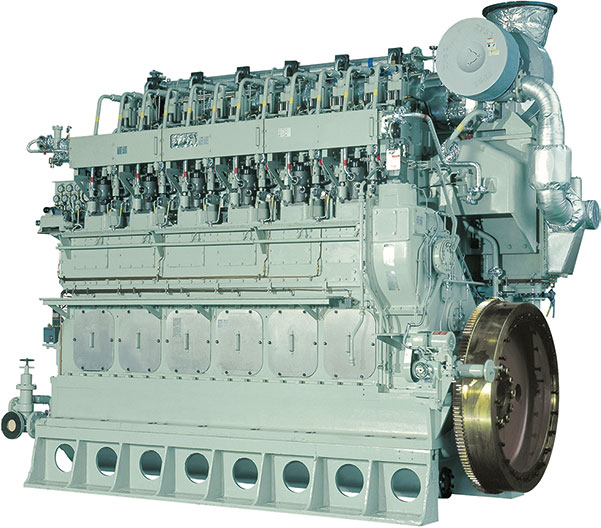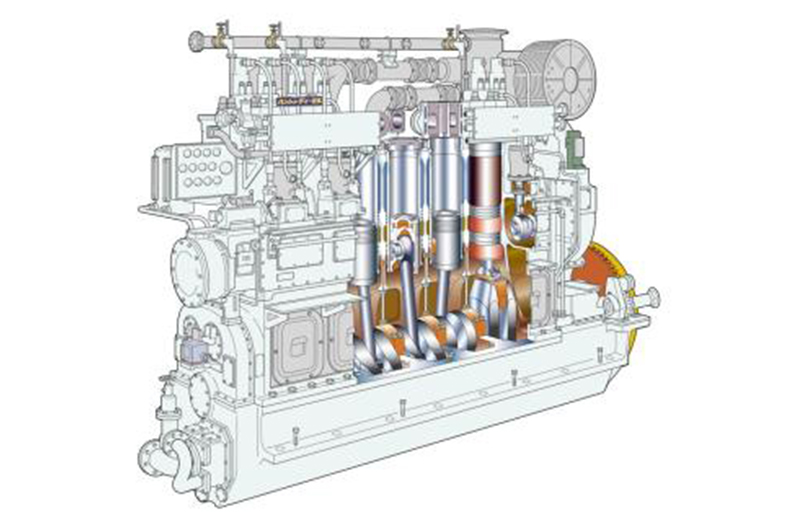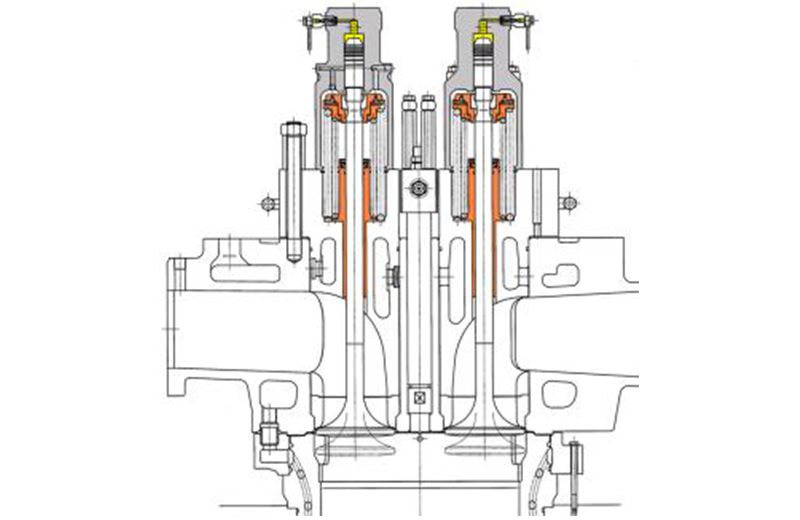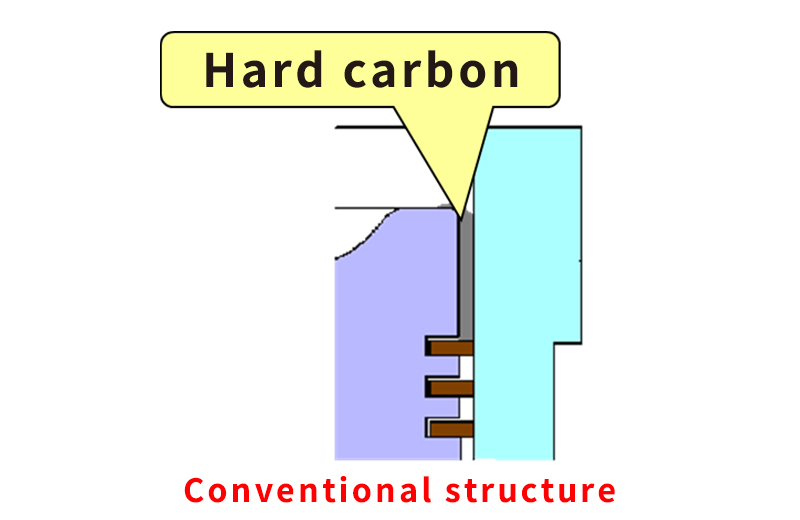LA Series
Based on the LH and LH-L model engines with a transition to a longer stroke, this series has a standard specification of direct connection to a propeller shaft without passing through a reduction gearbox, made possible by improving the stroke efficiency and lowering the revolution speed. By increasing the propeller diameter, the propulsion efficiency has been improved and fuel oil consumption has been reduced in consideration for lower levels of NOx as an environmental response measure. Moreover, the series reduces noise and prevents oil splashing by adopting a hydraulic valve driving system. An L-save ring is also used on all models.

About LA
- Low-speed Advance
- A low speed engine that has taken a further step forward.
Advantages
- High reliability and performance realized by technology built over our 100 years of history, and our manufacturing results and experience that exceed an equivalent of 12 million engine horsepower.
- The LA series has been improved by making its stroke longer to raise its stroke efficiency, and reducing its revolution speed so it can directly connect to a slowly rotating crankshaft without passing through a reduction gearbox.
- The LA series uses fuel-efficient marine engines with consideration for low NOx emission (reduction of CO2).
- The LA series reduces noise and prevents oil splashing by adopting a hydraulic valve driving system.
- By equipping an L-save ring on the upper part of the cylinder liner, surface wear of the cylinder liner is lessened and lubricating oil consumption is reduced.
Hydraulic valve driving system
While the intake and exhaust valves were previously driven by a push rod system, it now uses a hydraulic valve driving system. This reduces the noise around the cylinder cover and prevents oil splashing.
The hydraulic valve uses the system oil as its hydraulic oil, so there is no need for a specialized hydraulic pump or filter.
L-save ring
Development background
After the collapse of Japan's economic bubble, this engine was developed to respond to issues which had become problems with main engines for domestic coastal vessels, including: aging of crew members, a lack of crew members and experienced technicians, deterioration of environments within vessels, and considerations for the global environment. Its development concepts included low NOx, response to the NOx regulations of the year 2000, ease of maintenance, extension of maintenance intervals, low vibration, low noise, improved reliability and durability, low fuel oil consumption, and reduced lubricating oil consumption.
Reasons for selection by customers
Due to its outstanding low-vibration and low-noise technology, and extension of its maintenance intervals achieved by improvements in durability, it is selected for its ability to improve the working environments of crew members.
It is also chosen for its low fuel oil consumption and low lubricating oil consumption.
Difficulties during development
Difficulties in its development included measures to address a depletion in the hydraulic oil of the hydraulic valve devices, and efforts to simplify the structure.
What types of vessels are the engines suitable for?
They are suitable for domestic coastal vessels with low and medium load use, and large fluctuations in load.
Total shipment volume
Roughly 370 units
Particulars
| Model | Number of cylinders | Output (kW) | Speed (min-1) | Cylinder bore (mm) | Stroke (mm) |
|---|---|---|---|---|---|
| LA26G | 6 | 1,029 | 370 | 260 | 520 |
| LA28G | 6 | 1,323 | 330 | 280 | 590 |
| LA30(G) | 6 | 1,176 | 280 | 300 | 600 |
| LA30(G) | 6 | 1,323 | 290 | 300 | 600 |
| LA32G | 6 | 1,618 | 280 | 320 | 680 |
| LA32G | 6 | 1,618 | 310 | 320 | 680 |
| LA34(G) | 6 | 1,765 | 260 | 340 | 720 |
| LA34(G) | 6 | 1,912 | 270 | 340 | 720 |
- Models with a "G" are diesel engines equipped with a reversing gearbox.
Inquiries About Products
Please feel free to inquire with us on our products, services, or any other matters.






